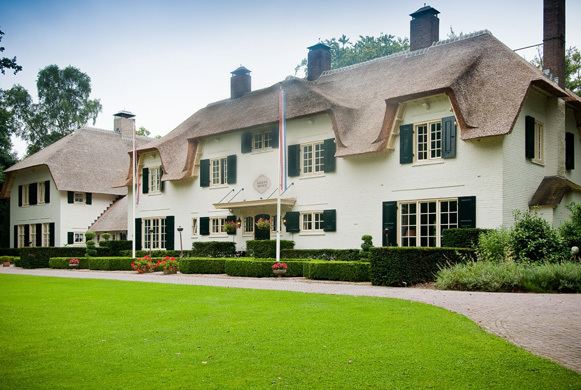 | ||
Historically an estate comprises the houses and outbuildings and supporting farmland and woods that surround the gardens and grounds of a very large property, such as a country house or mansion. It is the modern term for a manor, but lacks the latter's now abolished jurisdictional authority. It is an "estate" because the profits from its produce and rents are sufficient to support the household in the house at its center, formerly known as the manor house. Thus "the estate" may refer to all other cottages and villages in the same ownership as the mansion itself, covering more than one former manor. Examples of such great estates are Woburn Abbey in Bedfordshire, England, and Blenheim Palace, Oxfordshire built to replace the former manor house of Woodstock.
"Estate", with its "stately home" connotations, has been a natural candidate for inflationary usage during the 20th century. An estate properly so-called should comprise several farms, and is not well used to describe a single farm.
More generally and usually in modern times, an estate is any large packet of land in single ownership: see
United States
In the United States: Long Island, Bar Harbor on Mount Desert Island, and other affluent East Coast enclaves; the San Francisco Bay Area, early Beverly Hills, California, Montecito, California and other affluent West Coast enclaves are estates; all had strong traditions of large agricultural, grazing, and productive estates modeled on those in Europe. However, after the Great Depression and World War II, by the late 1940s and early 1950s many were demolished and subdivided, in some cases resulting in suburban villages named for the former owners, as in Baxter Estates, New York.
Today large houses on at least several acres are often referred to as "estates", in a contemporary updating of the word's usage. In some real estate ventures however, the term's application is stretched, as in Jamaica Estates, Queens and others.
Traditional American estates include:
In American English, the above connotation is the primary meaning of the word "estate" (when it is not prefaced by the word "real"). That is why the British English terms "trading estates" and "industrial estates" sound like oxymorons to Americans, as few wealthy persons would deliberately choose to live next to factories.
